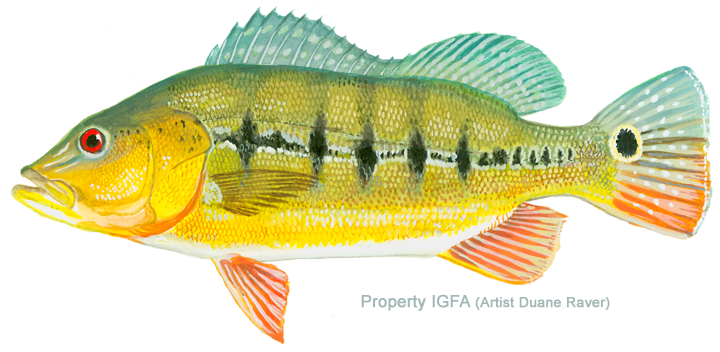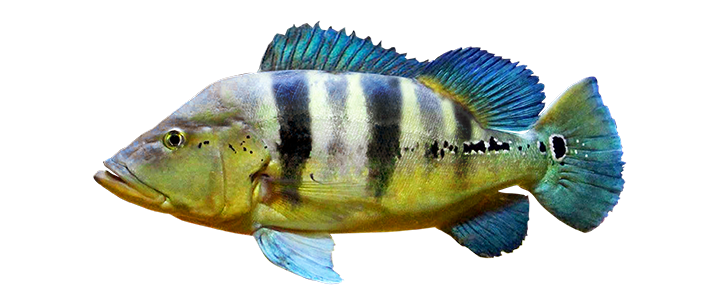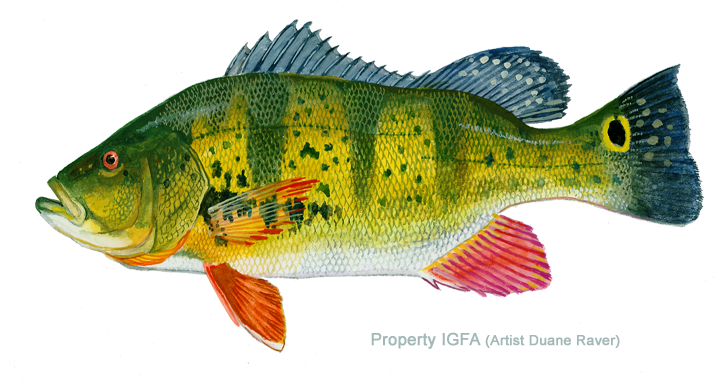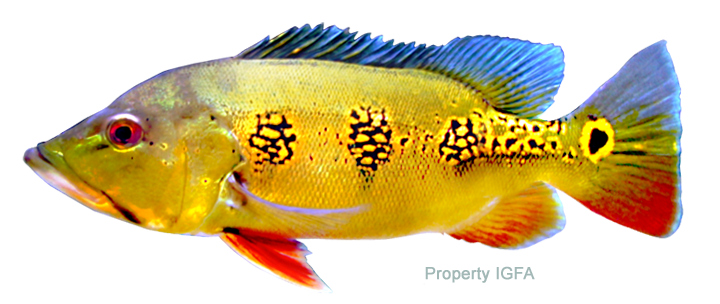Game Fish Identification Reference Guides
Peacock, speckled
(Cichla temensis)
(Cichla temensis)
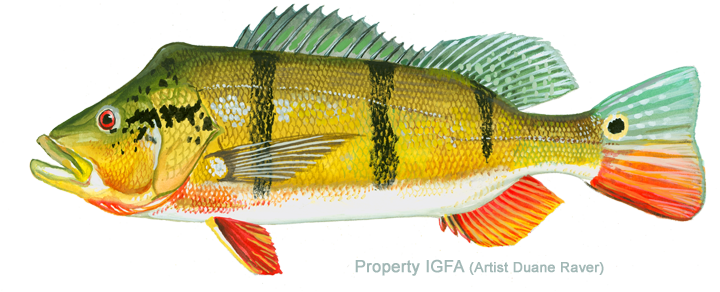
Humbolt, 1821; CICHLIDAE FAMILY; also known as pavón cinchado, pavón pintado, pavón trucha, tucunare, and pavón venado
The speckled peacock is a world-class warm-water sportfish native to South America’s Orinoco and Amazon River Basins. It has been introduced into other countries and is established in southeastern Florida as a result of a deliberate introduction made in 1985.
Adult speckled peacocks are distinguished by blotches on the opercula and three vertical black bars on the body which become more pronounced with age. Another color phase may have 4-6 horizontal rows of light colored dashes along the sides and speckling over the rest of the body and fins. The above description may be confusing, but it combines what was thought to be two different species until 1981. This is the only Cichla spp. which has broken longitudinal lines and spots on the head, opercula and in caudal/dorsal fins, resulting in a speckled appearance.
An excellent game fish, the speckled peacock can be caught on spin, bait-casting or fly tackle. Their pound-for-pound power is brutal, even when matched to heavy tackle. They will strike plugs, spoons, spinners, streamer flies and popping bugs. Their top water strikes are stunning in ferocity and they make spectacular jumps and strong runs. The larger they get, the more fiercely they fight. Considering they can grow to more than 30 pounds, be prepared for a battle when you hook into a speckled peacock!
An excellent food fish, the flesh of the speckled peacock is firm in texture and varies from white to a creamy white in color
The speckled peacock is a world-class warm-water sportfish native to South America’s Orinoco and Amazon River Basins. It has been introduced into other countries and is established in southeastern Florida as a result of a deliberate introduction made in 1985.
Adult speckled peacocks are distinguished by blotches on the opercula and three vertical black bars on the body which become more pronounced with age. Another color phase may have 4-6 horizontal rows of light colored dashes along the sides and speckling over the rest of the body and fins. The above description may be confusing, but it combines what was thought to be two different species until 1981. This is the only Cichla spp. which has broken longitudinal lines and spots on the head, opercula and in caudal/dorsal fins, resulting in a speckled appearance.
An excellent game fish, the speckled peacock can be caught on spin, bait-casting or fly tackle. Their pound-for-pound power is brutal, even when matched to heavy tackle. They will strike plugs, spoons, spinners, streamer flies and popping bugs. Their top water strikes are stunning in ferocity and they make spectacular jumps and strong runs. The larger they get, the more fiercely they fight. Considering they can grow to more than 30 pounds, be prepared for a battle when you hook into a speckled peacock!
An excellent food fish, the flesh of the speckled peacock is firm in texture and varies from white to a creamy white in color













